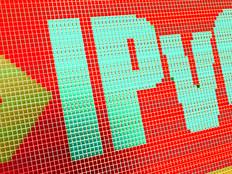IPv6 and Y2K —Similar and Yet Not
When it comes to technology, one thing is constant: evolution.
As consumers, we want our information retrieval to be faster than lightning and our Internet connectivity to be warp speed. From an industry perspective, vendors want to develop value-added applications (the so-called killer apps) that take advantage of today’s Internet infrastructure.
Internet Protocol Version 6 (IPv6) is the latest technology initiative that has industry and government abuzz. Its promise is, well, simply that, promise. The debate over the need for a new version of the Internet’s underlying protocol has generated myriad discussions globally. As a result, IPv6 is being referred to as the “next Y2K.”
The comparison to the year 2000 rollover definitely makes for great press and, to some degree, makes sense. Y2K had its supporters and detractors. We are seeing the same with the IPv6 transition. With Y2K, a fix was needed by a specific deadline or else. (The “or else” factor painted a frightening scenario.) With IPv6, an initial deadline of June 2008 has been set for federal agencies, and some individuals are predicting a potentially scary picture. Perhaps the greatest similarities between Y2K and IPv6, however, are the scope and cost to implement.
Much like its role with Y2K, the government has taken a leadership position on IPv6, establishing a Transition Working Group and mandating implementation milestones. But, within the implementation strategies, Y2K and IPv6 differ.
Y2K caused many people to hold their breath when the clock struck midnight on Jan. 1, 2000. In fact, you probably remember what you were doing that day. IPv6 does not elicit the same type of anxiety. Agencies will phase in IPv6 over a number of years. The Internet will continue to function on June 30, 2008, albeit in a hybrid mode. In fact, the ultimate success of IPv6 will eventually rely on the achievements of IPv4, and the scalability it has afforded.
Slow Roll
A subtle factor distinguishing Y2K and IPv6 is the degree of cooperation stimulated by the vendor community. In most cases, Y2K required hardware and software manufacturers to modify application code based on a date in time. And although IPv6 could force these same manufacturers to redesign their applications (based on a larger IP address schema), the fix is not married to a specific calendar entry. It is this fact that seems to have slowed vendors from jumping on the IPv6 bandwagon. Many companies are taking a wait-and-see approach, looking for the market to achieve critical mass before they act.
A significant benefit resulting from the government’s transition to IPv6 is the requirement that each agency use technology refresh dollars. Technology evolution is inevitable, but the resources must be available to leverage such advancement. IPv6 is forcing agencies to examine existing infrastructure components, identify specific elements that could be affected by IPv6 (or otherwise need to be upgraded based on an end-of-life status) and create an efficient technology refresh program to substantiate technology purchases going forward.
Y2K came and went rather quickly, yet its significance will be remembered within the annals of IT lore. IPv6 will take longer to phase in, but its eventual impact will likely supersede that of Y2K. To illustrate metaphorically: Y2K was a 100-meter dash; IPv6 will be a marathon.







